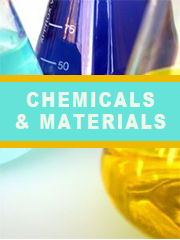Report overview
Borosilicate glass is a type of glass with the main glass-forming constituents of silica and boron trioxide. Borosilicate glasses are known for having very low coefficients of thermal expansion, making them resistant to thermal shock, more than any other common glass. Such glass is less subject to thermal stress and is commonly used for the construction of ampoule bottle, etc. Tip: At present, many players directly manufacture their own borosilicate glass into downstream products such as laboratory instruments and pharmaceutical packaging. The added value has increased several times and the data cannot be counted. Therefore, the report only deals with primary forms of products, namely primary forms of glass tubes, glass rods, and glass plates.
This report aims to provide a comprehensive presentation of the global market for Borosilicate Glass, with both quantitative and qualitative analysis, to help readers develop business/growth strategies, assess the market competitive situation, analyze their position in the current marketplace, and make informed business decisions regarding Borosilicate Glass. This report contains market size and forecasts of Borosilicate Glass in global, including the following market information:
Global Borosilicate Glass Market Revenue, 2018-2023, 2024-2029, ($ millions)
Global Borosilicate Glass Market Sales, 2018-2023, 2024-2029, (K MT)
Global top five Borosilicate Glass companies in 2022 (%)
The global Borosilicate Glass market was valued at US$ 1175.1 million in 2022 and is projected to reach US$ 1359.6 million by 2029, at a CAGR of 2.1% during the forecast period. The influence of COVID-19 and the Russia-Ukraine War were considered while estimating market sizes.
Global Borosilicate Glass key players include Yaohui Group, Linuo, Borosil, Schott, Corning, etc. Global top five manufacturers hold a share over 30%. China is the largest market, with a share over 50%, followed by Europe and India, total have a share over 30 percent. In terms of product, High Borosilicate Glass is the largest segment, with a share over 80%. And in terms of application, the largest application is Heat Glassware, followed by Solar Energy Tubes, Laboratory Glassware, Pharmaceutical Packaging, and Chemical Tubes.
We surveyed the Borosilicate Glass manufacturers, suppliers, distributors and industry experts on this industry, involving the sales, revenue, demand, price change, product type, recent development and plan, industry trends, drivers, challenges, obstacles, and potential risks.
Total Market by Segment:
Global Borosilicate Glass Market, by Type, 2018-2023, 2024-2029 ($ Millions) & (K MT)
Global Borosilicate Glass Market Segment Percentages, by Type, 2022 (%)
High Borosilicate Glass
Medium Borosilicate Glass
Global Borosilicate Glass Market, by Application, 2018-2023, 2024-2029 ($ Millions) & (K MT)
Global Borosilicate Glass Market Segment Percentages, by Application, 2022 (%)
Solar Energy Tubes
Heat Glassware
Laboratory Glassware
Pharmaceutical Packaging
Chemical Tubes
Others
Global Borosilicate Glass Market, By Region and Country, 2018-2023, 2024-2029 ($ Millions) & (K MT)
Global Borosilicate Glass Market Segment Percentages, By Region and Country, 2022 (%)
North America
US
Canada
Mexico
Europe
Germany
France
U.K.
Italy
Russia
Nordic Countries
Benelux
Rest of Europe
Asia
China
Japan
South Korea
Southeast Asia
India
Rest of Asia
South America
Brazil
Argentina
Rest of South America
Middle East & Africa
Turkey
Israel
Saudi Arabia
UAE
Rest of Middle East & Africa
Competitor Analysis
The report also provides analysis of leading market participants including:
Key companies Borosilicate Glass revenues in global market, 2018-2023 (Estimated), ($ millions)
Key companies Borosilicate Glass revenues share in global market, 2022 (%)
Key companies Borosilicate Glass sales in global market, 2018-2023 (Estimated), (K MT)
Key companies Borosilicate Glass sales share in global market, 2022 (%)
Further, the report presents profiles of competitors in the market, key players include:
Yaohui Group
Linuo
Borosil
Schott
Corning
Kavalier
Micoe
Duran
Tianxu
Sichuang Shubo
Nipro
Yong Xing
Yao Guo
Four Stars Glass
Yuansheng Group
NEG
Tianyuan
Asahi Glassplant
Hilgenberg GmbH
JSG
Outline of Major Chapters:
Chapter 1: Introduces the definition of Borosilicate Glass, market overview.
Chapter 2: Global Borosilicate Glass market size in revenue and volume.
Chapter 3: Detailed analysis of Borosilicate Glass manufacturers competitive landscape, price, sales and revenue market share, latest development plan, merger, and acquisition information, etc.
Chapter 4: Provides the analysis of various market segments by type, covering the market size and development potential of each market segment, to help readers find the blue ocean market in different market segments.
Chapter 5: Provides the analysis of various market segments by application, covering the market size and development potential of each market segment, to help readers find the blue ocean market in different downstream markets.
Chapter 6: Sales of Borosilicate Glass in regional level and country level. It provides a quantitative analysis of the market size and development potential of each region and its main countries and introduces the market development, future development prospects, market space of each country in the world.
Chapter 7: Provides profiles of key players, introducing the basic situation of the main companies in the market in detail, including product sales, revenue, price, gross margin, product introduction, recent development, etc.
Chapter 8: Global Borosilicate Glass capacity by region & country.
Chapter 9: Introduces the market dynamics, latest developments of the market, the driving factors and restrictive factors of the market, the challenges and risks faced by manufacturers in the industry, and the analysis of relevant policies in the industry.
Chapter 10: Analysis of industrial chain, including the upstream and downstream of the industry.
Chapter 11: The main points and conclusions of the report.
